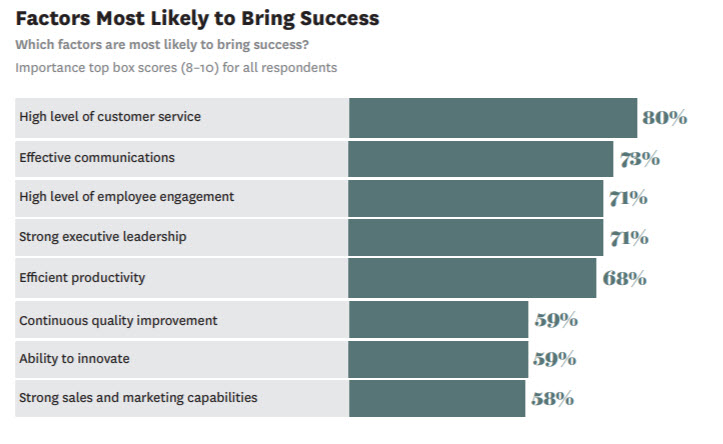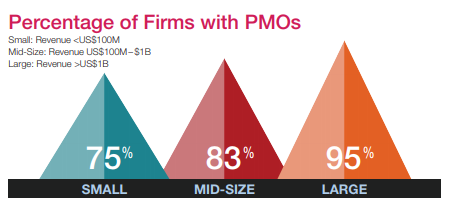Inefficiency Is Plaguing Your Team (and Making Them Cranky): Tell-tale Sign #1 that You Need Independent Leadership
Welcome to the Tell-tale Signs blog series! In this three-part series of articles, I’m sharing the three biggest stumbling blocks I see most often with organizations who are struggling to complete projects — and how independent leadership can shift your team to a whole new level of success.
Read Tell-tale Sign #2 and Tell-tale Sign #3.
“Efficiency” has been a corporate watchword in business operations for decades. Efficiency is important, but I’d argue that the real goal is productivity — achieving the business goal, despite all the moving parts that may be required to get there. As Michael C. Mankins and Eric Garton, authors of Time, Talent, Energy: Overcome Organizational Drag and Unleash Your Team’s Productive Power, point out in their book, great companies obsess over productivity, not just efficiency.
Let’s look at inefficiency for what it is: a productivity destroyer. Inefficiency doesn’t just slow people down, it erodes morale, too. So how can we solve inefficiencies to boost your team’s productivity … and boost their spirits, too? I’m going to answer that question for you in this very article.
Tell me if any of this sounds familiar:
- Ideas for new initiatives abound, but projects never seem to get off the ground.
- You’ve got multiple projects in motion, but none of them are progressing at the rate you want to see.
- You have a fantastic team, but they can’t seem to get traction on a project.
- You have dedicated project managers, but they’re running so many projects that progress on any one of them is incremental at best.
I know. In my role as an independent project leader, I’ve seen it all — dozens of times. The most likely culprit? Inefficiency. Inefficiency can lurk in any phase of a project, from the front-end planning to the execution. But one thing is for sure: Whenever it’s present, it sucks the life out of a project. Inefficiency kills momentum.
Every project needs momentum. The energy required to create something new or implement a big change depends on an emotional investment from the team, a belief that the goal can be achieved. But inefficiency can slowly erode motivation, and before you know it, the project isn’t going anywhere.
The good news is, inefficiency is easier to address than you think. Here are four of the most effective tactics I’ve seen work on projects that were stalling due to inefficiencies.
One of the ways that inefficiency most often manifests itself is through silos. The project team may have multiple team members who represent different functions or disciplines, but they aren’t really working together. That means soliciting different perspectives and encouraging people to discuss each other’s ideas openly to find out what elements work or don’t work for individual stakeholders. It’s also important to make sure that everyone gets a chance to weigh in — even those team members who aren’t as likely to volunteer an opinion on their own.
Engagement isn’t just useful for getting a project back on track. Research has shown that employee engagement is critical to a healthy corporate culture, too. In one study published by the Harvard Business Review, 71% of respondents ranked employee engagement as very important to achieving overall organizational success.

SOURCE: Harvard Business Review
What’s true at the macro-level is true at the micro-level. Engaging every member of the project team can generate a lot of creativity, and uncover new ways of tackling a problem. And that kind of engagement energizes the team in a way that no process improvement ever could.
Most of us are creatures of habit. When it comes to managing projects, it’s normal to want to stick to what’s worked in the past. Too often, we don’t realize that we’re wearing blinders about the “one right way” to do things.
Research has shown that people often revert to ingrained habits under stress — and what’s true at the individual level is true at the organizational level. When a project isn’t going the way we’d like, our first instinct might be to dig in and re-apply the same principles we’ve been following to solve the problem.
But the answer isn’t always to tinker with an existing process. Instead of fixating on driving a particular agenda forward, try taking a step back. Observe the situation without judgment and see if you can find common ground among your stakeholders to move things forward in a new way.
It’s important to approach this openly. Come from a place of genuine curiosity, rather than skepticism or even pessimism. Not only will you uncover new insights, you’ll build trust with your team. Those new insights and greater trust will inject new life into your project — and help your whole project team get back on track. (This is actually one of the big reasons organizations bring me in as an independent leader for projects and strategic initiatives. I come in with fresh perspective, unique processes — and without bias.)
Inefficiency can also take the form of unrecognized synergy. Some of the best work happens when two seemingly unrelated functions combine their expertise to support each other. It’s an approach I like to call “Yin Meets Yang”.
In Chinese philosophy, the concept of yin and yang describes how seemingly opposite forces may actually be complementary and interdependent. In business, this can look like the balance between organizational change and stability, or between consistency and innovation.

Research bears this out: Studies have shown a positive correlation between collective team performance and the diversity of expertise on that team. So when you find something isn’t working well, try to think about the problem more broadly, and consider that the solution may come from an unexpected place.
Here’s an example. Let’s say you have a communication problem. People complain that they’re never sure where the project stands in terms of milestones and schedules. Could the IT department create a dashboard for the project team, where everyone can see what’s going on at-a-glance, instead of digging through their Inbox for the latest project status email? Or would the online collaboration tool the HR department uses to manage the annual review process work to solve your team’s communication problem?
Think outside your silo.
Best of all, collaboration between people and teams with different areas of expertise doesn’t just make the project more successful, it also improves overall organizational knowledge.
When projects are managed in isolation — say, at the individual department level — project teams have limited visibility to what other parts of the organization are doing. The project kicks off, but soon the team is scrambling to recover from unforeseen contingencies (e.g. competing priorities or unrecognized dependencies from other parts of the organization). This is where a Project Management Office (PMO) becomes very important.
A PMO is a dedicated team or department that is responsible for setting the standards and processes by which projects are run within the organization. With a standardized framework for planning, executing and reporting on projects, the organization’s initiatives have more predictability and are properly aligned with business objectives.
One of the big advantages of a PMO is that they provide the ability to monitor and report on active projects from across the organization. This uniquely positions them to identify any cross-functional dependencies — or opportunities for collaboration.
A PMO is an important part of many businesses’ operations. According to a recent report, 85% of the companies surveyed had a PMO in place, with the size of the organization ranging from small to large.

SOURCE: State of the Project Management Office (PMO) 2016, PM Solutions Research
Having a PMO can eliminate many inefficiencies in projects of varying complexity, while ensuring that projects are aligned with the strategic objectives of the organization.
With all the pressures of schedules and scarce resources, inefficiencies are bound to creep into any project. The key is to recognize them as soon as possible and take steps to address them. More often than not, you’ll be able to resolve them pretty quickly if you use one (or all!) of the tips I shared in this article.
Spotting and eliminating inefficiency is critical to keeping your projects on track — and it’s a key component of the SparkPath methodology. Learn more about how we manage and support program delivery to help business executives advance their organizational and enterprise initiatives.
Download or View this Article as a PDF








